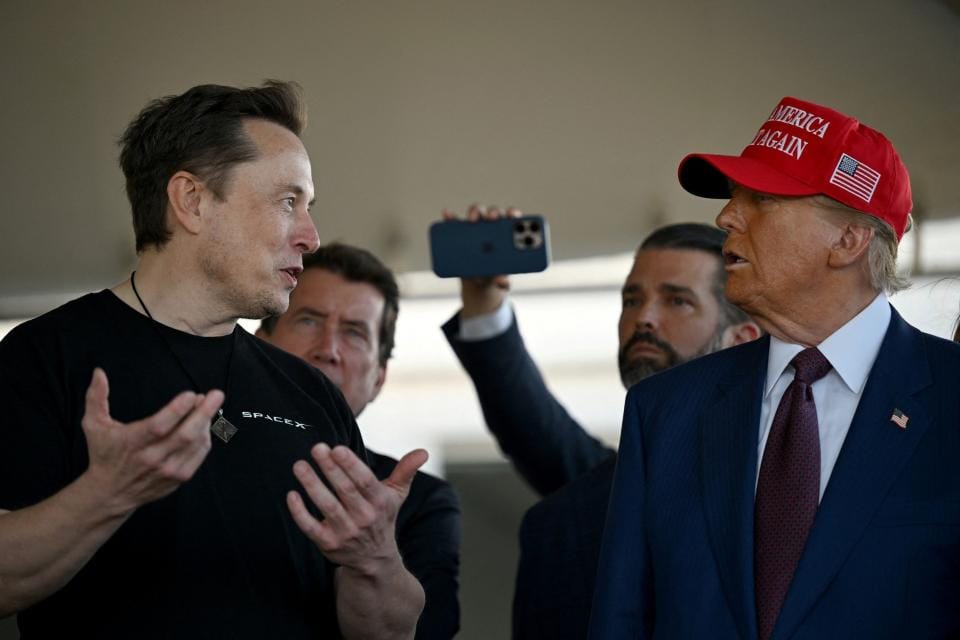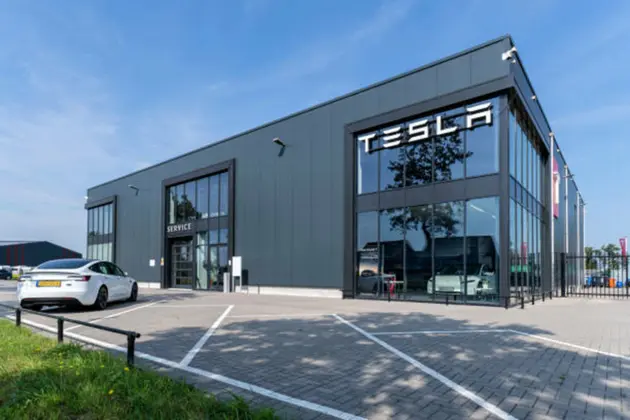SpaceX Successfully Launches Starship Rocket, But Booster Recovery Fails; Trump and Musk Watch
SpaceX launches its giant Starship rocket with major milestones, but booster recovery fails; Trump and Musk witness historic event.

SpaceX has made significant strides in space exploration with the successful launch of its Starship rocket from Boca Chica, Texas, on Tuesday. The launch marked a key milestone in the company’s goal to revolutionize space travel, but a planned booster recovery ended in failure. Despite this setback, the mission achieved several other important goals, signaling progress in SpaceX's ambitions to reach the Moon, Mars, and beyond. Notably, the launch was attended by U.S. President-elect Donald Trump and SpaceX CEO Elon Musk, further solidifying their growing relationship.
Starship’s Ambitious Launch
SpaceX’s Starship rocket, towering at 71 meters, successfully lifted off from its launch pad in Texas. This event marked an important step forward in the company’s development of reusable rockets, a technology designed to reduce the cost of space travel and enable future missions to Mars.
The launch was a significant moment for SpaceX, demonstrating the power and potential of its next-generation rocket. Starship's first-stage Super Heavy booster detached from the spacecraft’s second stage, also known as Starship, at an altitude of 62 kilometers. This separation sent the spacecraft into space and achieved one of the mission's key goals.
However, the excitement was tempered by a failure during the booster’s return phase. Instead of successfully landing on the ground via the innovative "catch-landing" method with tower-mounted arms, the booster splashed down in the Gulf of Mexico. A live stream from space blogger Everyday Astronaut captured the dramatic moment when the booster exploded in a massive fireball after splashdown.
Booster Recovery Setback
The failure of the booster recovery was a disappointing moment in an otherwise successful mission. SpaceX has worked extensively on its innovative booster recovery system, which is a crucial part of its vision for reusable rockets. Last month, the company successfully demonstrated the catch-landing method, which was hailed as a major milestone in reducing spaceflight costs.
Elon Musk had referred to the planned booster recovery as "faster and harder" in a pre-launch social media post, but unfortunately, the technology didn’t work as expected this time. However, the mission was still considered a success, as the rocket completed its main objectives in space, including reaching Earth’s orbit before splashing down in the Indian Ocean.
Starship's Achievements in Space
Despite the recovery failure, Starship achieved several important milestones during its flight. One of the most notable was the successful reignition of one of Starship’s engines in space, a first for the spacecraft. This achievement is vital for demonstrating the spacecraft’s maneuverability and capability for future missions, especially those targeting destinations like Mars.
The mission also showcased Starship's ability to complete an orbit of Earth, an essential step in SpaceX’s long-term plans for interplanetary travel. The spacecraft’s safe splashdown in the Indian Ocean also marked a success in terms of reentry and landing, showing that SpaceX is progressing toward building a reusable and reliable vehicle for deep space exploration.
The Growing Relationship Between Trump and Musk
In a symbolic moment during the launch, SpaceX CEO Elon Musk and U.S. President-elect Donald Trump were both present to witness the event. This appearance underscores the growing ties between Musk and the incoming administration, particularly around the ambitions for space exploration.
Musk has previously expressed optimism that the new administration, under Trump’s leadership, would prioritize missions to Mars, which aligns with his vision for SpaceX. The administration’s push to return astronauts to the lunar surface through NASA’s Artemis program is seen as a stepping stone to longer-term missions to Mars, a goal Musk has relentlessly pursued with SpaceX.
The appointment of Musk as co-leader of the Department of Government Efficiency (DOGE) by Trump is another sign of the close collaboration between the two. DOGE is an initiative aimed at eliminating wasteful spending and easing regulations, something Musk has long advocated for, particularly when it comes to space exploration. Musk has voiced frustration over the Federal Aviation Administration’s (FAA) delays in approving commercial rocket launches, which he believes hinder SpaceX’s Mars mission timelines.
Looking Ahead: The Future of SpaceX and Starship
Despite the booster failure, SpaceX continues to make significant strides toward its goal of becoming the first private company to send humans to Mars. Musk has expressed hope that the new U.S. administration will speed up Starship’s development, as it is a crucial part of NASA’s strategy for deep space missions.
In particular, the successful launch and performance of Starship suggest that SpaceX is on track to become a leader in commercial space travel. The company is also making significant progress on its goal of building the world’s first fully reusable rocket system, which would dramatically lower the cost of space missions and make it easier to travel beyond Earth’s orbit.
With the ongoing development of Starship, Musk’s vision for Mars colonization is becoming more tangible. The successful demonstration of engine reignition, orbital flight, and splashdown recovery are all critical steps toward creating a spacecraft capable of interplanetary travel. If SpaceX can overcome the technical challenges, it could lead the way in establishing humanity’s presence on Mars.
Conclusion
Tuesday’s launch of SpaceX’s Starship rocket was a historic event, even though it was marred by a failure to recover the booster. The mission demonstrated several key advancements in spaceflight technology, and while the booster recovery setback was disappointing, the overall success of the mission showed SpaceX’s continued progress.
With President-elect Donald Trump’s support and the increasing focus on Mars exploration, SpaceX’s Starship program is positioned to play a pivotal role in the future of space exploration. As the company works toward refining its reusable rocket technology, the dream of interplanetary travel seems more achievable than ever before.



